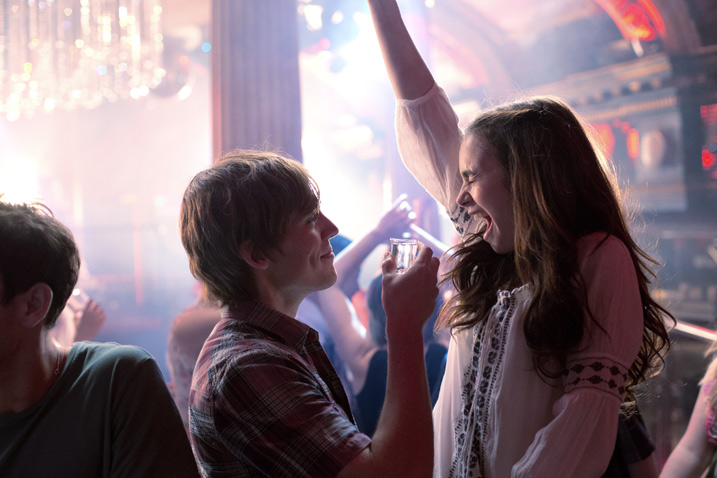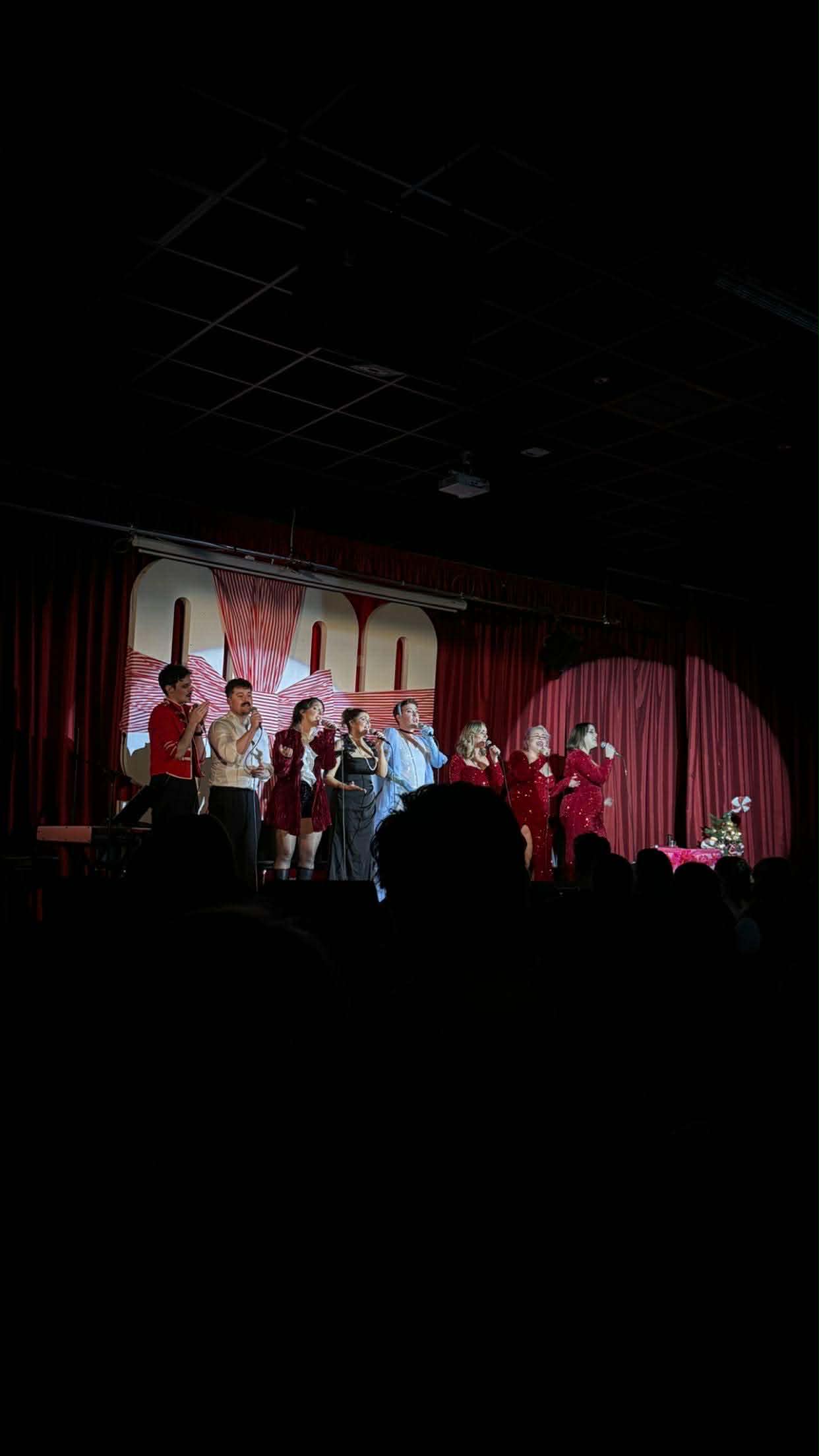Katie Waits on Friends to Lovers
There are tropes we love, tropes we hate, those that are overused and others that we wish were appreciated more. There are many romantic tropes that frequently appear in literature, including the friends-to-lovers trope. Although often very unrealistic, with the power to ruin dating expectations, friends-to-lovers is, if well-written, a wonderful trope. Usually, I don’t seek out romance novels, but that doesn’t mean I’m opposed to romantic tropes. When friends-to-lovers crops up, in whatever book I’m reading, I can’t help but become invested, wanting to know how the relationship is going to develop.
My favourite example of the friends-to-lovers trope can be found in Cecelia Ahern’s novel, Where Rainbows End. Having watched and adored the film adaptation, Love, Rosie, I was curious to see what the book was like. If you’re a fan of the friends-to-lovers trope, I would highly recommend reading it! It tells the story of the lives of Rosie and Alex who have been best friends since they were little. Surprise, surprise, they fall in love; but they always maddeningly miss each other. From pregnancies, and missed hints, arguments, and marriage to other people ÔÇô it’s a relief when they eventually confess their love for each other at the end, when they’re well into adulthood. That feeling when the couple you’ve been rooting for FINALLY get together is such a pleasing one.
It is simultaneously one of the most frustrating and satisfying tropes, and can be fun to read for this reason. The subtle gestures, major hints, romantic chemistry, and character growth ÔÇô you can’t help but immerse yourself in their story. It can quite often be an emotional rollercoaster. Whilst it can be seen as a clich├® trope, the fact that there are many examples of friends-to-lovers in literature just goes to show how popular it remains.

Octavia Graham on Dystopian Rebellion
In my experience of using literature as a form of escapism, the dystopian rebellion trope has never failed to push away the negativities of my own reality and replace them with that of a fictional society. A world which is similar to the one in which we live but exaggerates possible flaws which could but haven’t surpassed, in turn highlighting positives in our own, present society.
Dystopian realities appear in classics like ÔÇÿ1984′, ÔÇÿClockwork Orange’ and ÔÇÿDo Androids Dream of Electric Sheep’ as well as young adult/teen fiction series like ÔÇÿDivergent’ and ÔÇÿThe Hunger Games’. They take place in an imagined future but using fears and concerns from real life – like possible outcomes to technological advancements or power abuse. They show the fragilities of our society and expose potential downfalls if we made immoral, power-fuelled choices. As a result, the dystopia’s presented in these books draw attention to the positives in our reality, it could be worse but it’s not. The dystopian rebellion trope is used in both ÔÇÿDivergent’ and ÔÇÿThe Hunger Games’ and puts forward the idea that when things are bad, if we work together that which is unjust will be overcome. Good will prevail and even when things seem as if they will never change, everything will be okay one day. Even in a world worse than the one in which we reside, things can get better so this one can too. In addition, the hardships undergone by the protagonists are somewhat unimaginable, which make day-to-day comings and goings seem more manageable. If Katniss can win the hunger games then surely I can wake up earlyÔǪ
The trope never fails to give hope, things will get better and maybe this life isn’t so bad after all.
Emily Bryant on The Chosen One
Much of the literature I was exposed to as a teenager carried the troupe of ÔÇÿThe Chosen One’. Whether it was the ÔÇÿBoy Who Lived’, the ÔÇÿGirl on Fire’ or the ÔÇÿChild of the Prophecy’, I seemed to crave reading of adolescents destined for great things. And it’s not just me ÔÇö everyone I knew wanted to be Katniss or Percy or Tris. We all fell in love with these characters, their stories, their lives, despite how deeply tragic they were.
So why was that? Why did we all adore the tales of struggle of these chosen heroes? In my experience, I found there was one main reason: we desperately wanted to be listened to.
Going through my teenage years, I became frustrated with the adults I was surrounded with. Teachers, family members, even my own parents. Any thoughts or opinions I had were usually shot down with ÔÇÿyou don’t know what you’re talking about’, ÔÇÿyou’re too young to be thinking about this’ or, a personal favourite, ÔÇÿthe adults are talking’.
So you can imagine my surprise when I read about these teenage characters who spoke out for what they believed in were listened to. Where I was ignored, they were praised. And reading their stories empowered my confidence. I delighted in the prospect of being heard by those surrounding me, or being treated as an equal by the adults that told me to hush up.
The stories of Harry, Percy, Katniss or Tris allowed us to live as though we were them. They were special, and as we poured over the pages, we felt special too. We may not have been the Boy who Lived or the Girl on Fire, but when they spoke up, we imagined that we were too.

Kimberley Jones on Enemies to Lovers
It’s the ÔÇÿenemies to lovers’ trope for me. This trope is where at the beginning of the book the main character starts by hating another character only to end up falling in love with them as the book progresses. This is seen in a favourite book of mine, Obsidian (The Lux series by Jennifer Armentrout) between Katy and Daemon, which started my love of the enemies to lovers’ trope. I really enjoy enemies to lover tropes as it is refreshing to see an exaggerated take on a more realistic experience of love. Some books depict love as if it just happens with a click of your finger and that when you bump into someone it is love at first sight, but enemies to lovers’ tropes show that sometimes love can come from unexpected places, but more importantly that it takes time. It shows how we can change our minds after getting to know as well as grow alongside someone, and showing how much effort is needed to form a solid connection with another person. The trope is also great because the characters have to be strong, interesting individuals in their own right in order for the two to compromise their differences to form a relationship. The trope allows us to connect to the characters emotionally as most of us have experienced what it is like to be attracted to someone who is flawed, so we can actually relate to how the character feels but also understand how the attraction occurred. However, not all enemies to lovers’ tropes are the same, sometimes the relationship can be seen as toxic and relying upon manipulation, but it’s still interesting how two different characters develop together, even in different ways.


